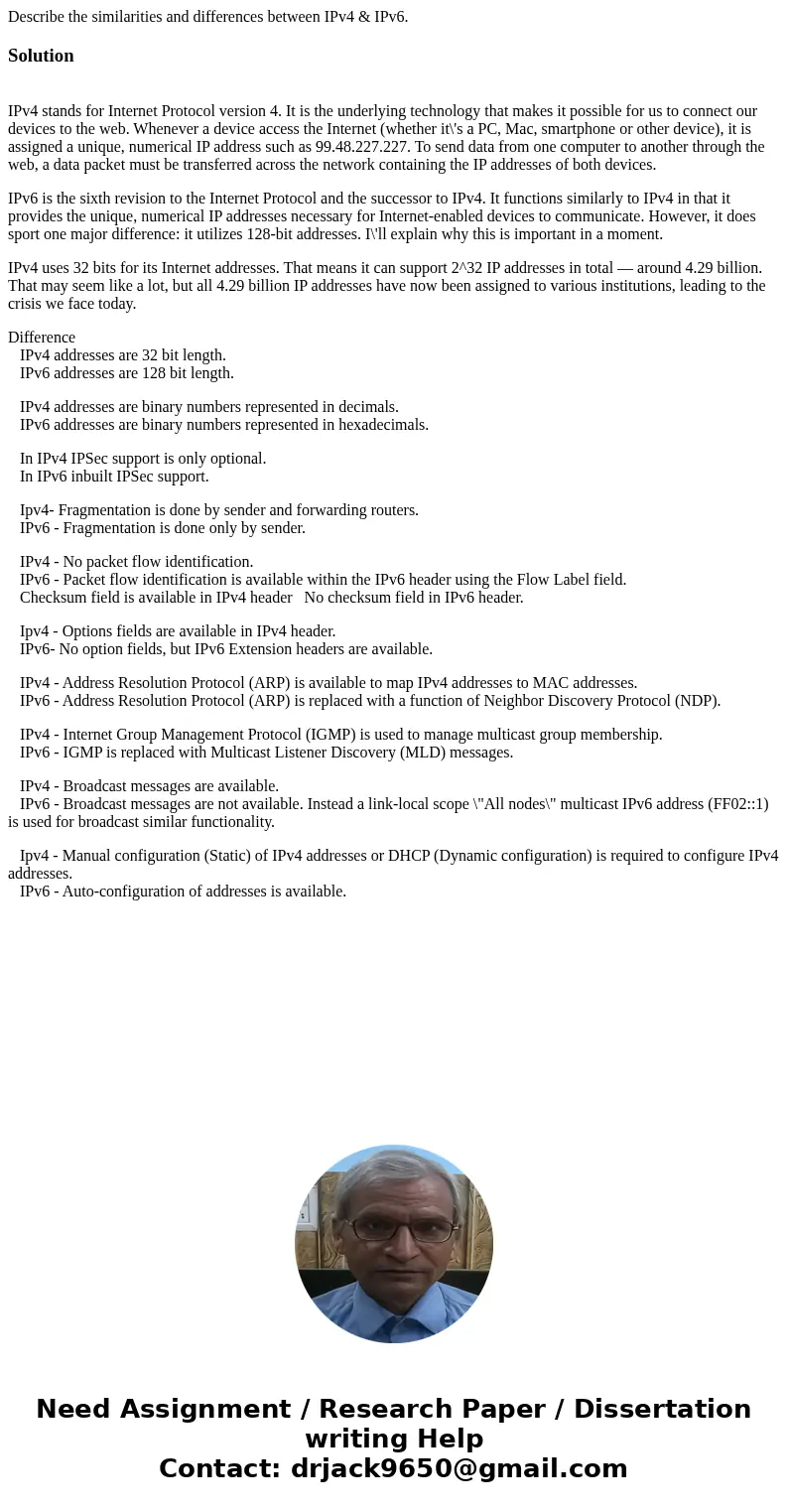Describe the similarities and differences between IPv4 IPv6
Describe the similarities and differences between IPv4 & IPv6.
Solution
IPv4 stands for Internet Protocol version 4. It is the underlying technology that makes it possible for us to connect our devices to the web. Whenever a device access the Internet (whether it\'s a PC, Mac, smartphone or other device), it is assigned a unique, numerical IP address such as 99.48.227.227. To send data from one computer to another through the web, a data packet must be transferred across the network containing the IP addresses of both devices.
IPv6 is the sixth revision to the Internet Protocol and the successor to IPv4. It functions similarly to IPv4 in that it provides the unique, numerical IP addresses necessary for Internet-enabled devices to communicate. However, it does sport one major difference: it utilizes 128-bit addresses. I\'ll explain why this is important in a moment.
IPv4 uses 32 bits for its Internet addresses. That means it can support 2^32 IP addresses in total — around 4.29 billion. That may seem like a lot, but all 4.29 billion IP addresses have now been assigned to various institutions, leading to the crisis we face today.
Difference
IPv4 addresses are 32 bit length.
IPv6 addresses are 128 bit length.
IPv4 addresses are binary numbers represented in decimals.
IPv6 addresses are binary numbers represented in hexadecimals.
In IPv4 IPSec support is only optional.
In IPv6 inbuilt IPSec support.
Ipv4- Fragmentation is done by sender and forwarding routers.
IPv6 - Fragmentation is done only by sender.
IPv4 - No packet flow identification.
IPv6 - Packet flow identification is available within the IPv6 header using the Flow Label field.
Checksum field is available in IPv4 header No checksum field in IPv6 header.
Ipv4 - Options fields are available in IPv4 header.
IPv6- No option fields, but IPv6 Extension headers are available.
IPv4 - Address Resolution Protocol (ARP) is available to map IPv4 addresses to MAC addresses.
IPv6 - Address Resolution Protocol (ARP) is replaced with a function of Neighbor Discovery Protocol (NDP).
IPv4 - Internet Group Management Protocol (IGMP) is used to manage multicast group membership.
IPv6 - IGMP is replaced with Multicast Listener Discovery (MLD) messages.
IPv4 - Broadcast messages are available.
IPv6 - Broadcast messages are not available. Instead a link-local scope \"All nodes\" multicast IPv6 address (FF02::1) is used for broadcast similar functionality.
Ipv4 - Manual configuration (Static) of IPv4 addresses or DHCP (Dynamic configuration) is required to configure IPv4 addresses.
IPv6 - Auto-configuration of addresses is available.

 Homework Sourse
Homework Sourse